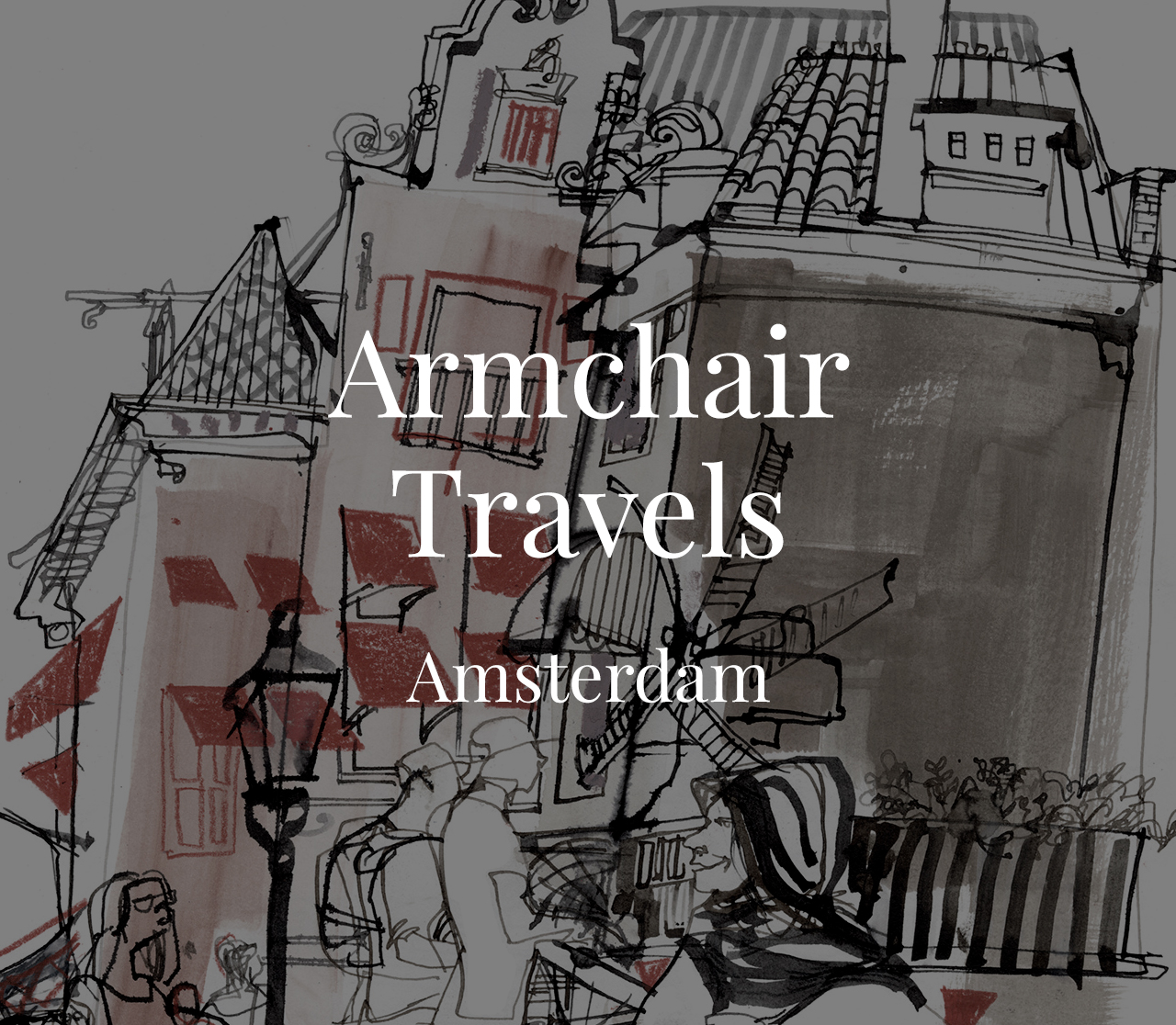 Welcome to Armchair Travels, an invitation to travel around the world through the reportage illustration of Studio 1482. We have gathered art from our travels to share with you in the hopes that, while you can’t get out and see these places (yet), our experiences may bring some happiness and light to your day. Please check back often as we will be posting new adventures weekly. Enjoy Amsterdam, by Veronica Lawlor…
Welcome to Armchair Travels, an invitation to travel around the world through the reportage illustration of Studio 1482. We have gathered art from our travels to share with you in the hopes that, while you can’t get out and see these places (yet), our experiences may bring some happiness and light to your day. Please check back often as we will be posting new adventures weekly. Enjoy Amsterdam, by Veronica Lawlor…
Amsterdam, jewel of The Netherlands! Home of Rembrandt! City of canals and beautifully colored charm-soaked residential buildings! City of windmills! City of bicycles! City of love and tolerance! (Can you tell I’m excited?)
I really enjoyed my visits to the city, both times that I went. As a child I had fantasies of Amsterdam, sowed in my wander-lusting little brain from reading about Hans Brinker skating through the city on rivers of ice. I’ve never been to Amsterdam during the winter, but I imagine it must be beautiful. It’s certainly stunning in the summer-time.
First of all, there are the FLOWERS. Amsterdam was, at one time, the epicenter of the tulip craze that took Europe by storm. Tulip-mania was real, and a source of wealth before the speculative bubble collapsed in 1637. But it seems that the flower worship it engendered is still alive and well in Amsterdam, and the ubiquitous Delftware vases in shop windows and museum exhibits stopped me in my tracks each time. I became a bit obsessed in search of the perfect tulipiere (tulip vase) for my entire stay, both times. To my Spartanly-influenced-decor inclined husband Neil’s relief, I never found one that met all three of my criteria: Classically unique + Easy to carry home + Less costly than the price of our round trip airfare from NYC.
What can I say, the right one is worth waiting for. And the search is so much fun!
The other thing that Amsterdam is famous for is its system of canals. Running through the streets and the bridges over those canals are essential pathways for people on boats, on foot, and on bicycle. Everywhere you look, you see this movement of people and their vehicles of transport – up, down, in, out, over, and around! When you combine that with the sunlight sparkling on the water, the lovely shade trees everywhere, and the gorgeous muted warm colors of the architecture, you get this unusual combination of calm and activity which is like no other I’ve experienced.
I am very drawn to vibrant city scenes, and Amsterdam does not disappoint.
Of course, we need to talk about the BICYCLES. They are more than a mode of transportation in Amsterdam, they are a way of life.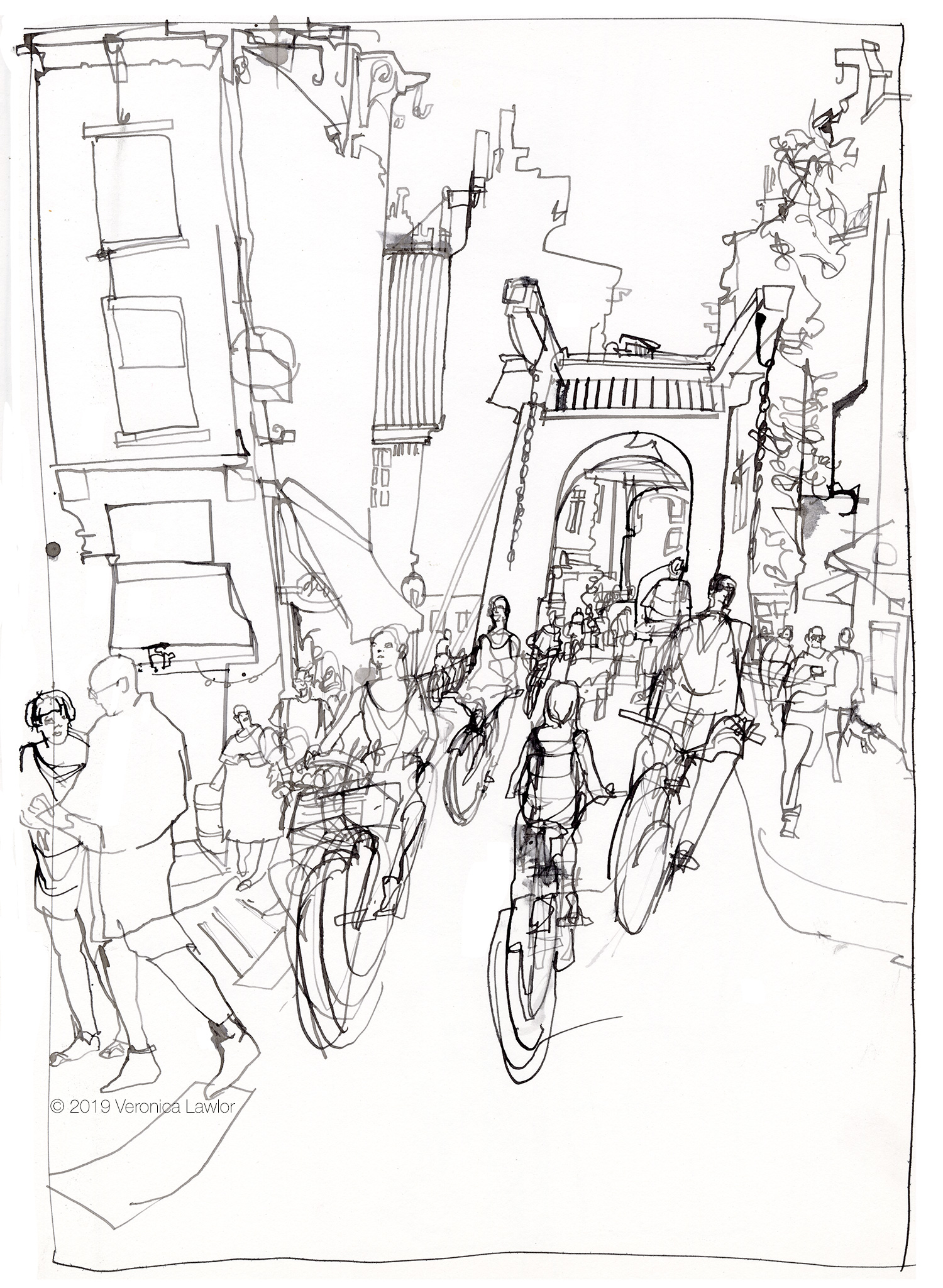 The people almost seem to become one with their bicycles – at least it began to feel that way to me as I made the drawing above. Waves and waves of bicycled-people (or is it peopled-bicycles?) came down the street like so much water, and at some point I stopped trying to differentiate them and drew them as one undulating shape that ebbed and flowed from the drawbridge at the end of the block.
The people almost seem to become one with their bicycles – at least it began to feel that way to me as I made the drawing above. Waves and waves of bicycled-people (or is it peopled-bicycles?) came down the street like so much water, and at some point I stopped trying to differentiate them and drew them as one undulating shape that ebbed and flowed from the drawbridge at the end of the block.
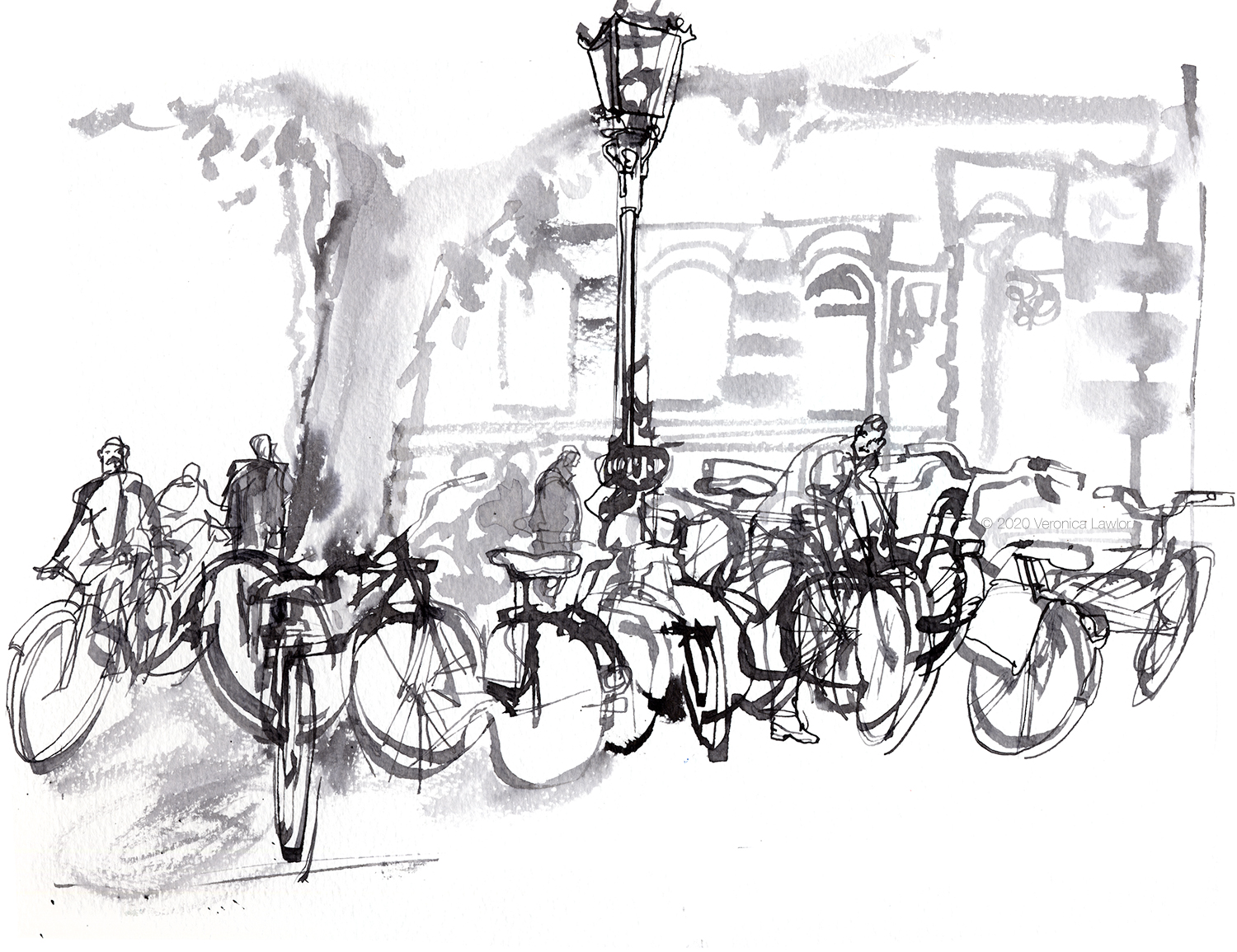
The bicycles even have their own parks, where they hang out together waiting for their riders to return. Â
 It is truly impossible to make a drawing anywhere in Amsterdam without someone (or many people) riding through your drawing on a bicycle. Or without noticing that the colors of the city are reflective of the hues used by its most famous artistic resident, Rembrandt. I don’t have drawings of his house, which we visited, because I was too busy LOOKING at the amazing studio he worked in and his global collection of inspirational props. I recommend that any artist visiting the city make the pilgrimage to his house, where you can experience the laborious process of grinding pigments and the limited palette that he worked within. (I also got to try my hand at the grinding stone!) But I digress.
It is truly impossible to make a drawing anywhere in Amsterdam without someone (or many people) riding through your drawing on a bicycle. Or without noticing that the colors of the city are reflective of the hues used by its most famous artistic resident, Rembrandt. I don’t have drawings of his house, which we visited, because I was too busy LOOKING at the amazing studio he worked in and his global collection of inspirational props. I recommend that any artist visiting the city make the pilgrimage to his house, where you can experience the laborious process of grinding pigments and the limited palette that he worked within. (I also got to try my hand at the grinding stone!) But I digress.
Back to the BICYCLES!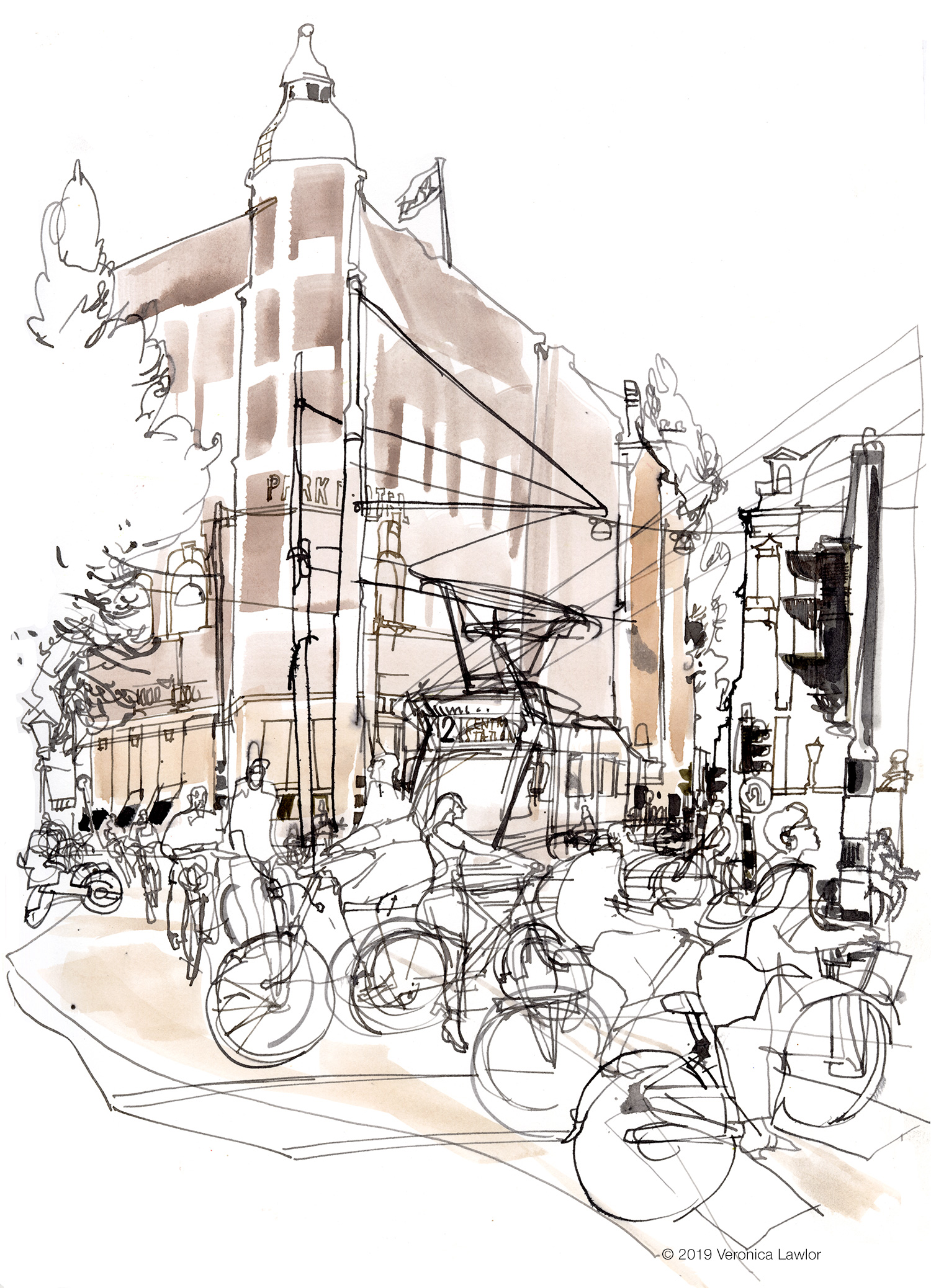
At rush hour the street movement of the bikes is non-stop! But the rush hour of Amsterdam seems so very civil to this New Yorker. People on their bikes stay in their lanes, and stop politely at red street lights. It was a bit of a mystery to me at first to figure out what lane was meant for riding and what lane was meant for walking. I do think a few people felt annoyance at my initial ignorance as they swerved out of my way. You eventually get the hang of it though – the lanes are color coded and the more time you spend in the city the more intuitive it becomes; and you get into the rhythm of the streets.
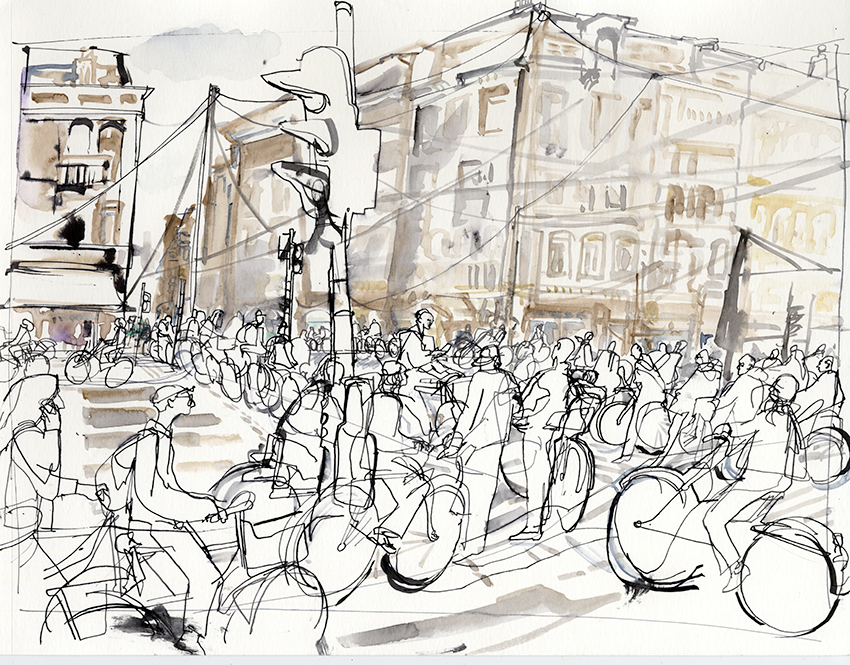 The use of bicycles as a main transportation and commuting mode rose to prominence the 70s when the Stop de Kindermoord (stop the child murder) group was formed to protest the more than 400 children who had been killed in traffic accidents in 1971. The group and many others pushed for the city streets to be more livable, and become a place for the residents, not the cars driving through. That, combined with the 1973 oil embargo which made gasoline enormously costly, pushed public opinion to become government policy, and  the movement took root. You can read more HERE. (Personally I love the urban lifestyle that they created in Amsterdam, and hope that NYC can continue with the pedestrian-only streets and outdoor dining that have been initiated in response to Covid19.)
The use of bicycles as a main transportation and commuting mode rose to prominence the 70s when the Stop de Kindermoord (stop the child murder) group was formed to protest the more than 400 children who had been killed in traffic accidents in 1971. The group and many others pushed for the city streets to be more livable, and become a place for the residents, not the cars driving through. That, combined with the 1973 oil embargo which made gasoline enormously costly, pushed public opinion to become government policy, and  the movement took root. You can read more HERE. (Personally I love the urban lifestyle that they created in Amsterdam, and hope that NYC can continue with the pedestrian-only streets and outdoor dining that have been initiated in response to Covid19.)
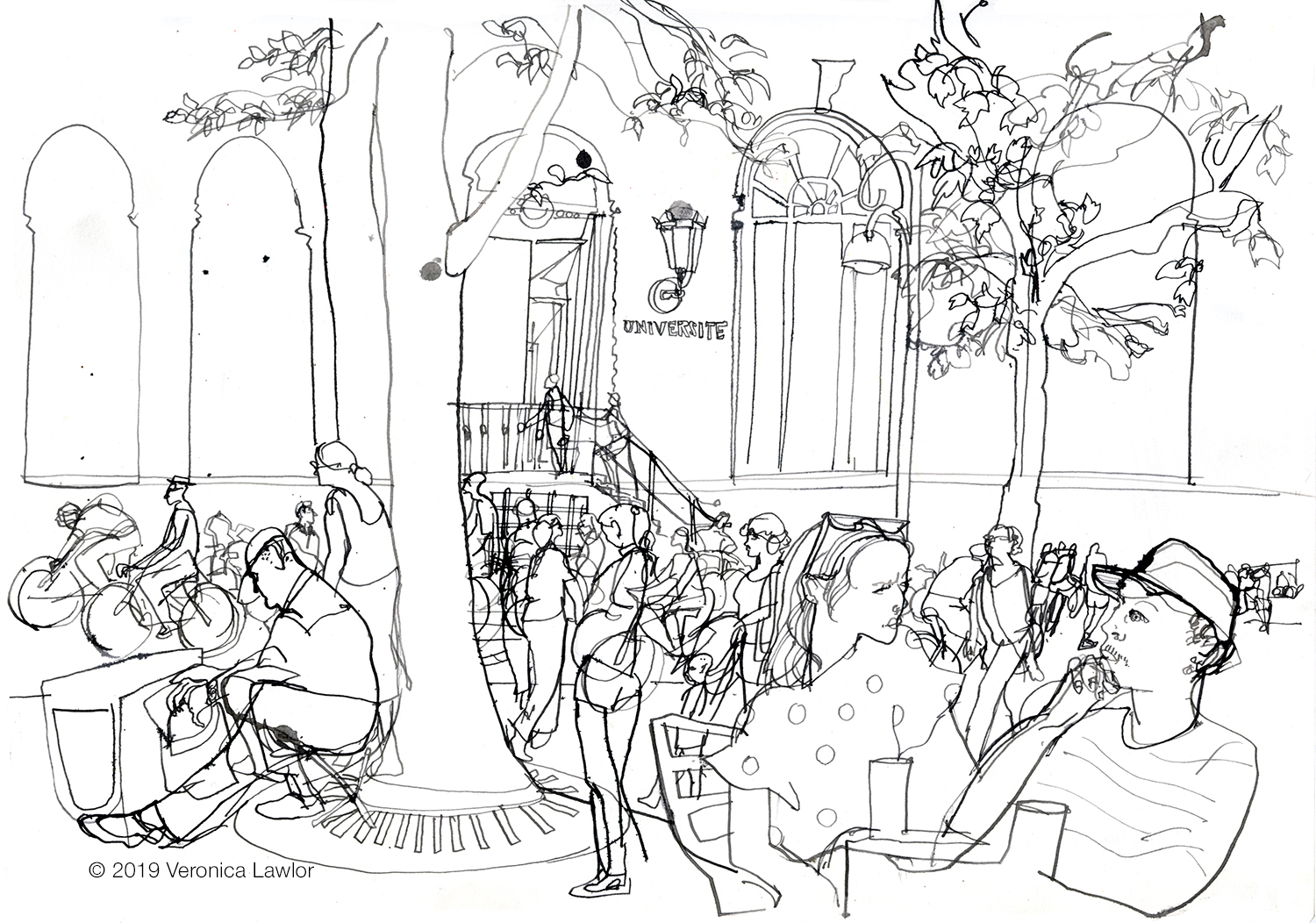 I taught several workshops for the Urban Sketchers symposium in the summer of ’19 at one of the lovely public plazas called the Spui (drawing above.) On certain days of the week this area hosts an outdoor book fair, and there is an American bookstore nearby. So nice to see a vibrant bookstore in the heart of a vibrant city!
I taught several workshops for the Urban Sketchers symposium in the summer of ’19 at one of the lovely public plazas called the Spui (drawing above.) On certain days of the week this area hosts an outdoor book fair, and there is an American bookstore nearby. So nice to see a vibrant bookstore in the heart of a vibrant city!
You’ll notice in this drawing though, that even in these areas meant for pedestrians and people seated at cafes, the stream of bicycles is a constant and steady presence.
 Of course no visit to the Netherlands would be complete without experiencing one of their greatest technological achievements – windmills. There is only one located in Amsterdam proper, and it is the home of a brewery. We visited it on a rainy day and I was able to find some cover to make the drawing above. Wanting to see more, we took a bus ride to the countryside surrounding Amsterdam to visit Zaanse Schans, a kind of Disneyworld of windmills.Â
Of course no visit to the Netherlands would be complete without experiencing one of their greatest technological achievements – windmills. There is only one located in Amsterdam proper, and it is the home of a brewery. We visited it on a rainy day and I was able to find some cover to make the drawing above. Wanting to see more, we took a bus ride to the countryside surrounding Amsterdam to visit Zaanse Schans, a kind of Disneyworld of windmills.  Arriving there on a blustery day and looking out over the fields of authentic windmills slowly churning, I could see why Don Quixote felt compelled to charge at them with his trusty servant Sancho Panza. They do feel alive.
Arriving there on a blustery day and looking out over the fields of authentic windmills slowly churning, I could see why Don Quixote felt compelled to charge at them with his trusty servant Sancho Panza. They do feel alive.
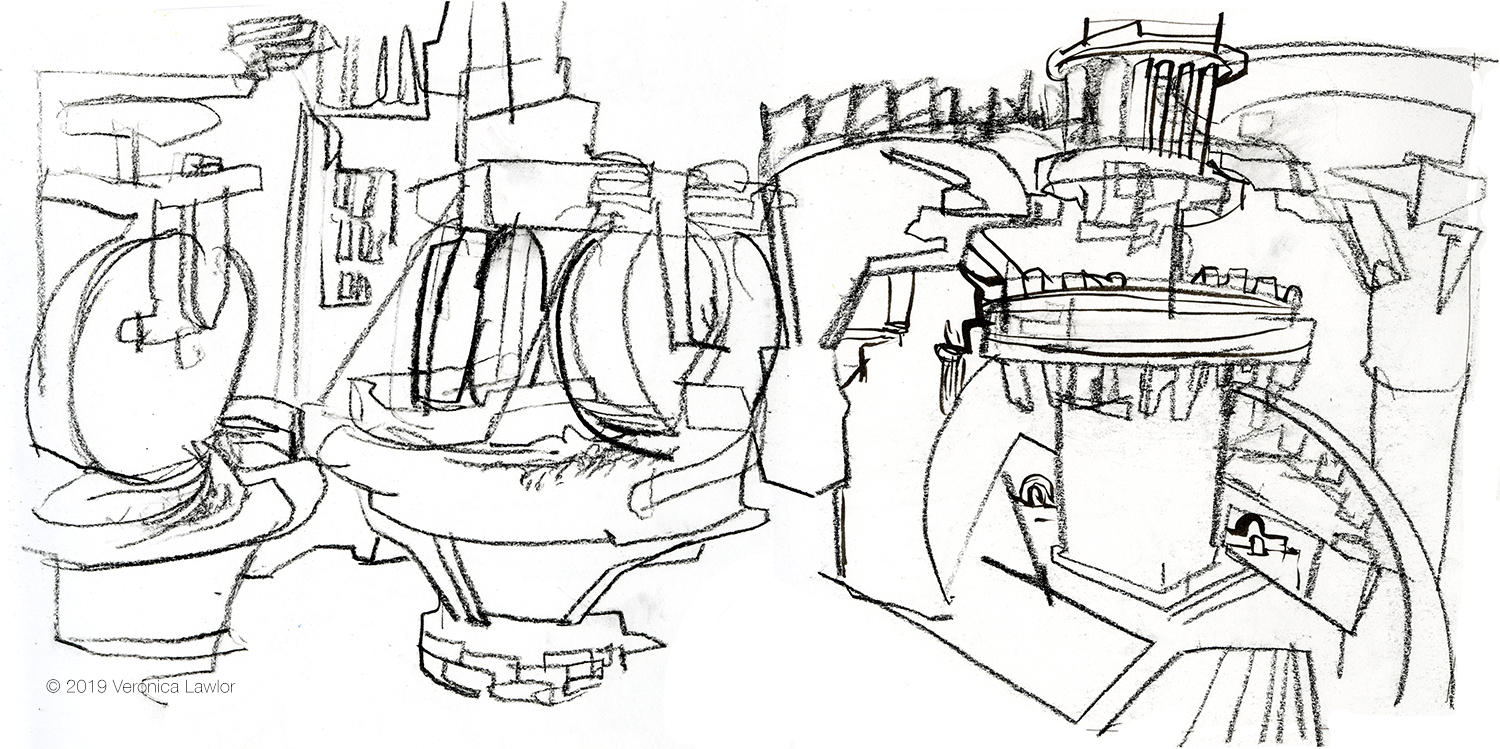 We went inside of a few of them to admire the workings of the gears and watch the various pigments and spices being ground down. The blades of the windmills operate similarly to the sails on a ship, and they do have sailcloth attached to them which is pulled down when the weather becomes too stormy.
We went inside of a few of them to admire the workings of the gears and watch the various pigments and spices being ground down. The blades of the windmills operate similarly to the sails on a ship, and they do have sailcloth attached to them which is pulled down when the weather becomes too stormy.
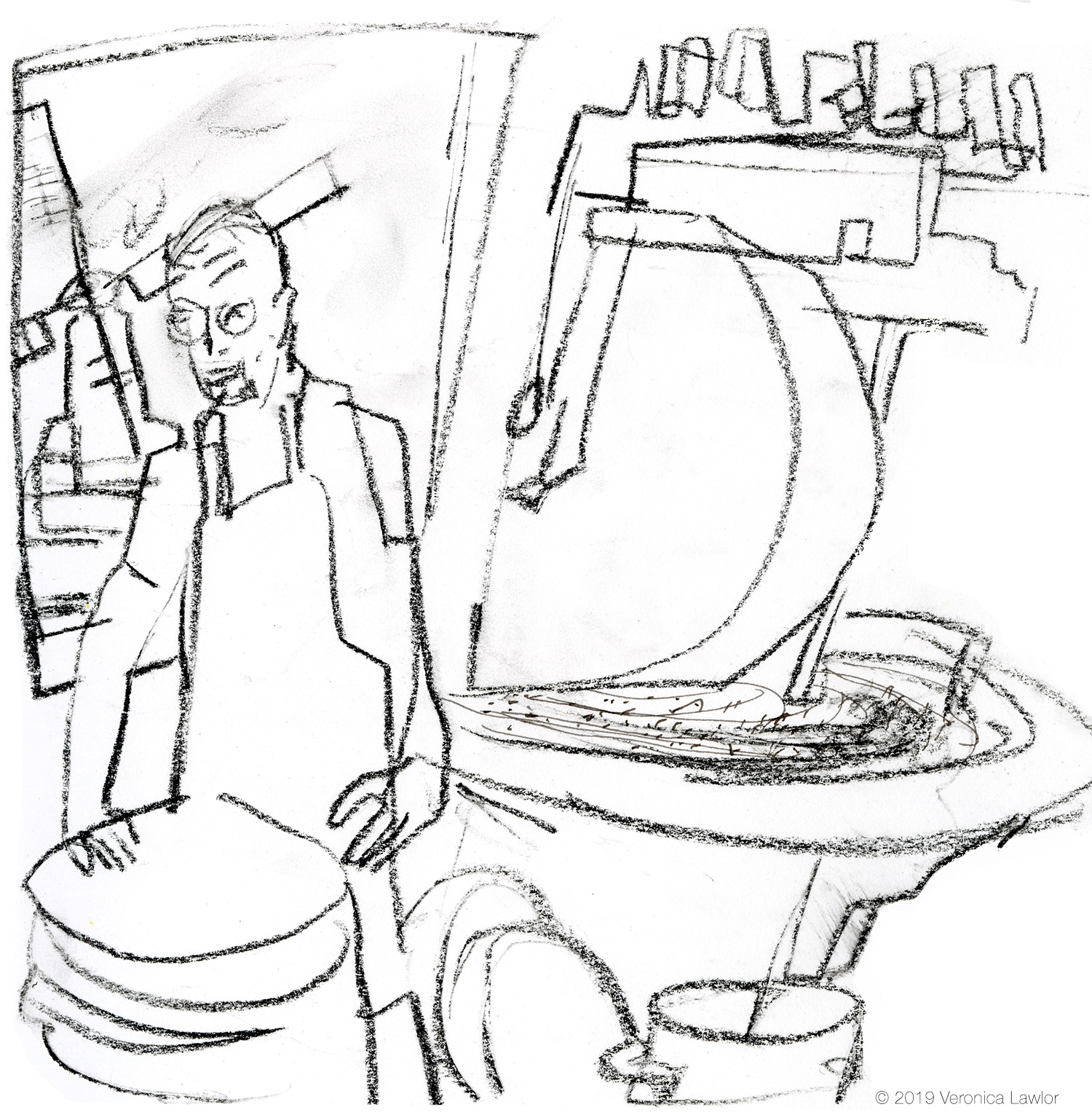 The miller above told us that the windmills in Zaanse Schans are still working, and one reason is to create the same pigments that Rembrandt used in the same way today. I love a country that preserves the paint hues of its masters.
The miller above told us that the windmills in Zaanse Schans are still working, and one reason is to create the same pigments that Rembrandt used in the same way today. I love a country that preserves the paint hues of its masters.
Before leaving this armchair journey, I definitely want to mention another important house in Amsterdam, the Anne Frank house. It is impossible to arrive in the city and line up for a ticket to visit the house, you need to purchase tickets way, way in advance. (If you’re wondering why I didn’t remember that for my second trip, I’m with you there.)
But I think in some ways, to look at the home where she spent over two years in hiding from the outside is just as moving. Such a small, unassuming building; such a tight space. I often think of how close the family came to freedom, and of what books and stories Anne Frank still had left to tell.
The house stands as a silent reminder of the dangers of hate gone unchecked.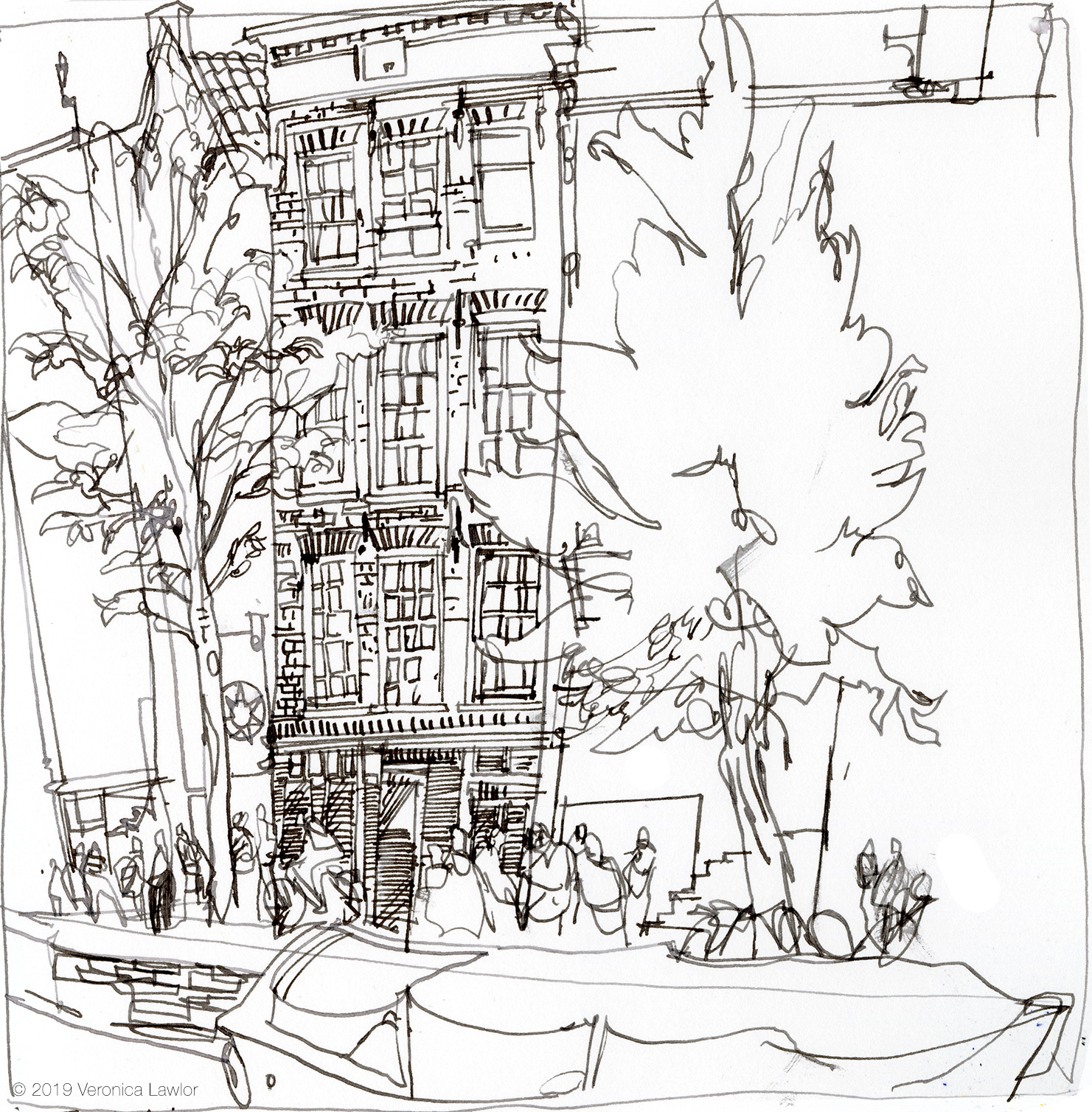
As an antidote to thoughts of hate, I’ll leave you with a few drawings from the Amsterdam Pride Parade, which famously floats its way through the canals of the city. My flight was scheduled to depart late in the afternoon of Pride day, but I did manage to spend a little time along the banks of one of the canals, celebrating LOVE along with the residents of Amsterdam, young and old, gay and straight, cis and trans.Â
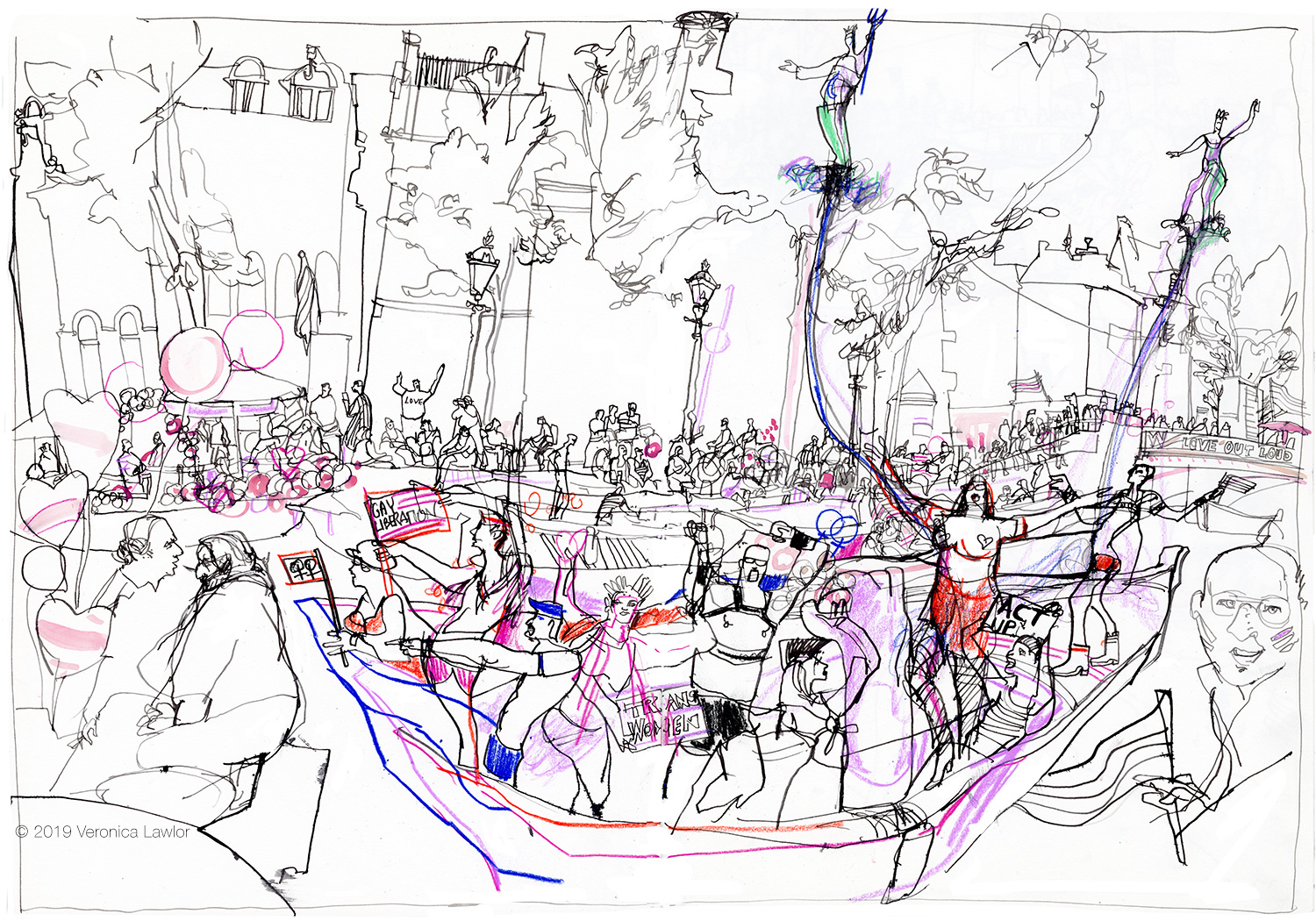
What a beautiful celebration of life and love in all the forms it takes. And I’ll end this rather long post by mentioning one more kind of love, love for the life of a city: Its streets and alleyways, its diversity of people and opinions, its crowded plazas, its intimate corners, its highest highs and its lowest lows. Covid19 has put a damper on the urban lifestyle for now, but I am filled with hope that both Amsterdam, and my own home town of New Amsterdam across the Atlantic, will emerge from this crisis better than ever. 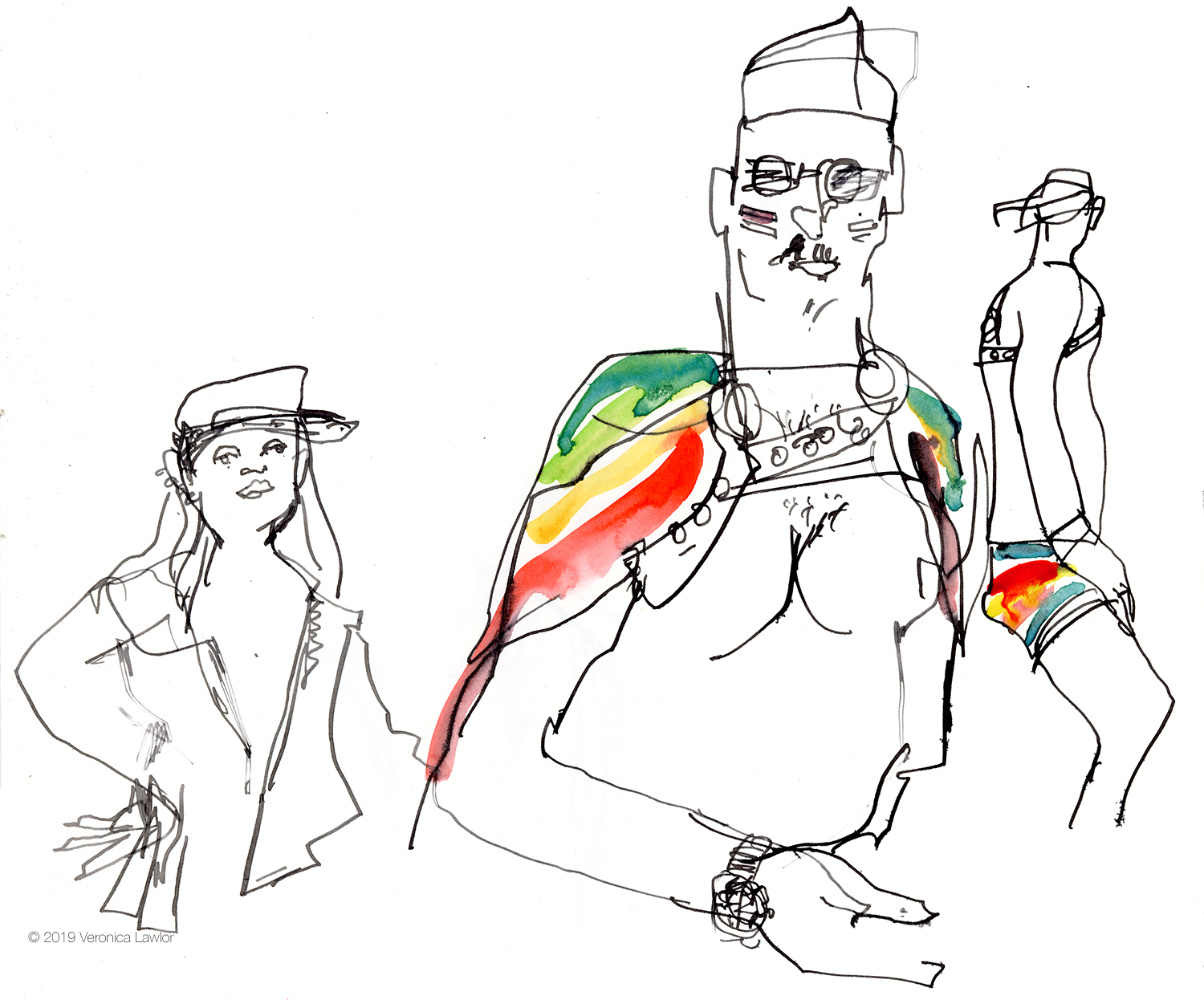
See you again soon Amsterdam!
To see more Armchair Travels from the reportage artists of Studio 1482, please click HERE.
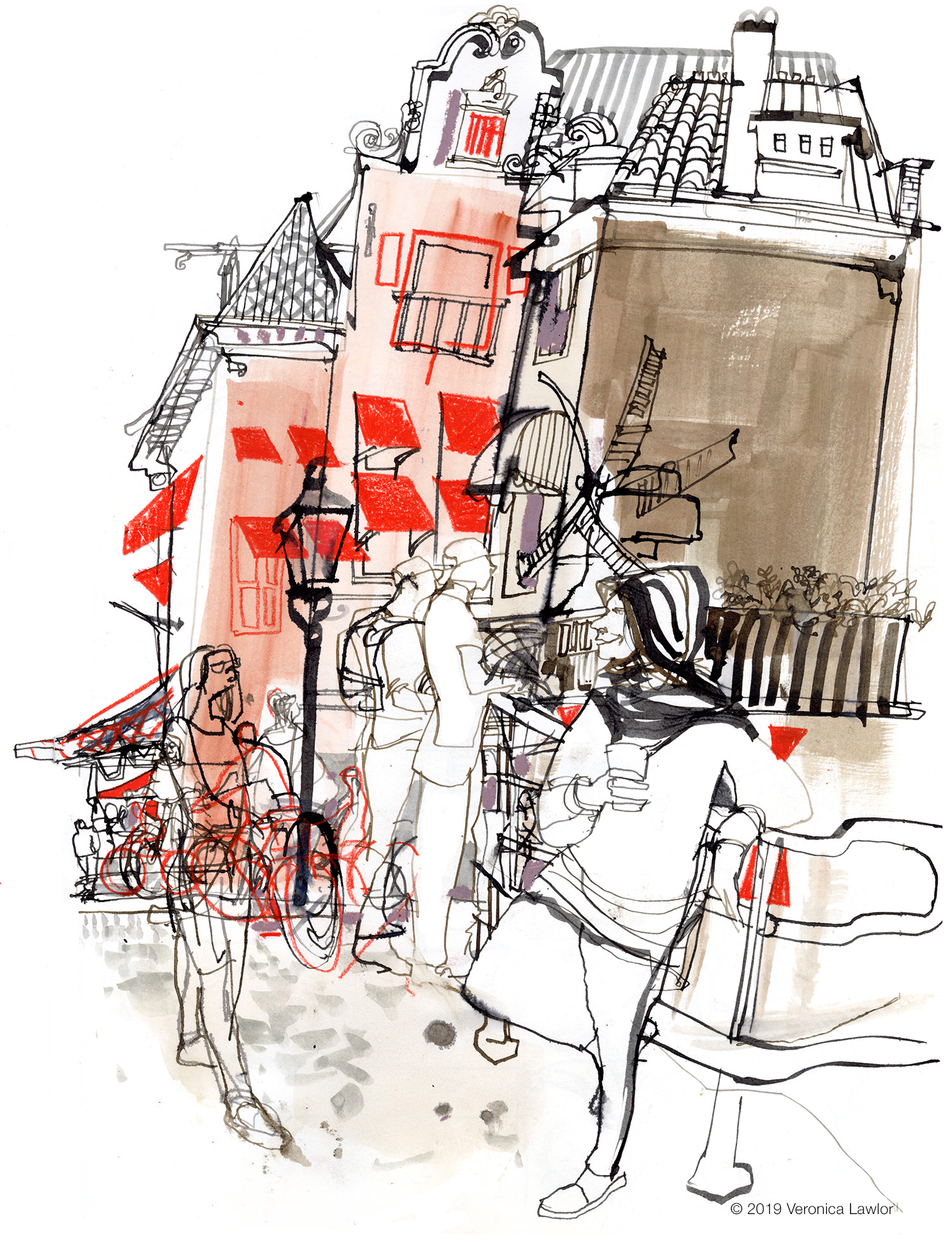
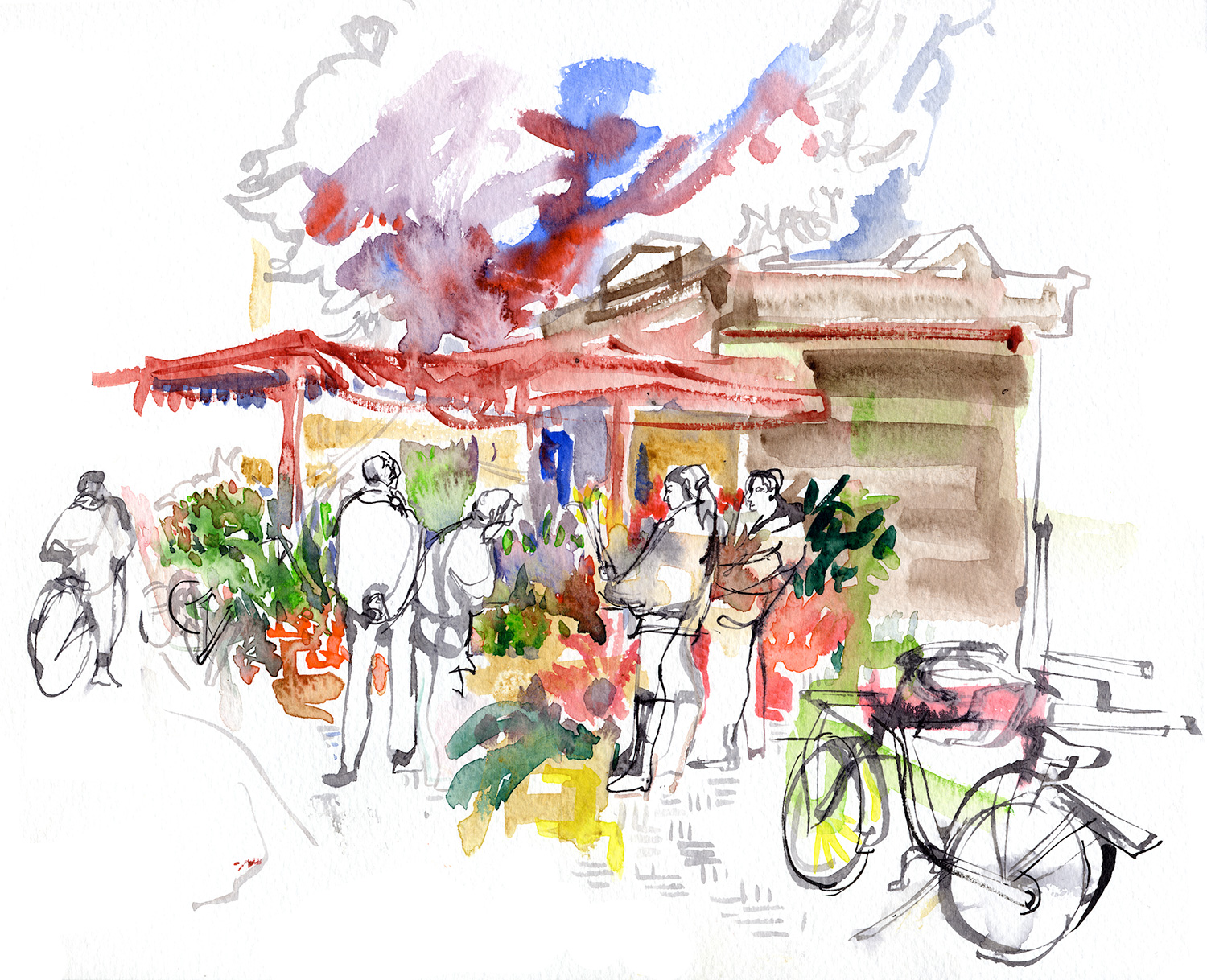
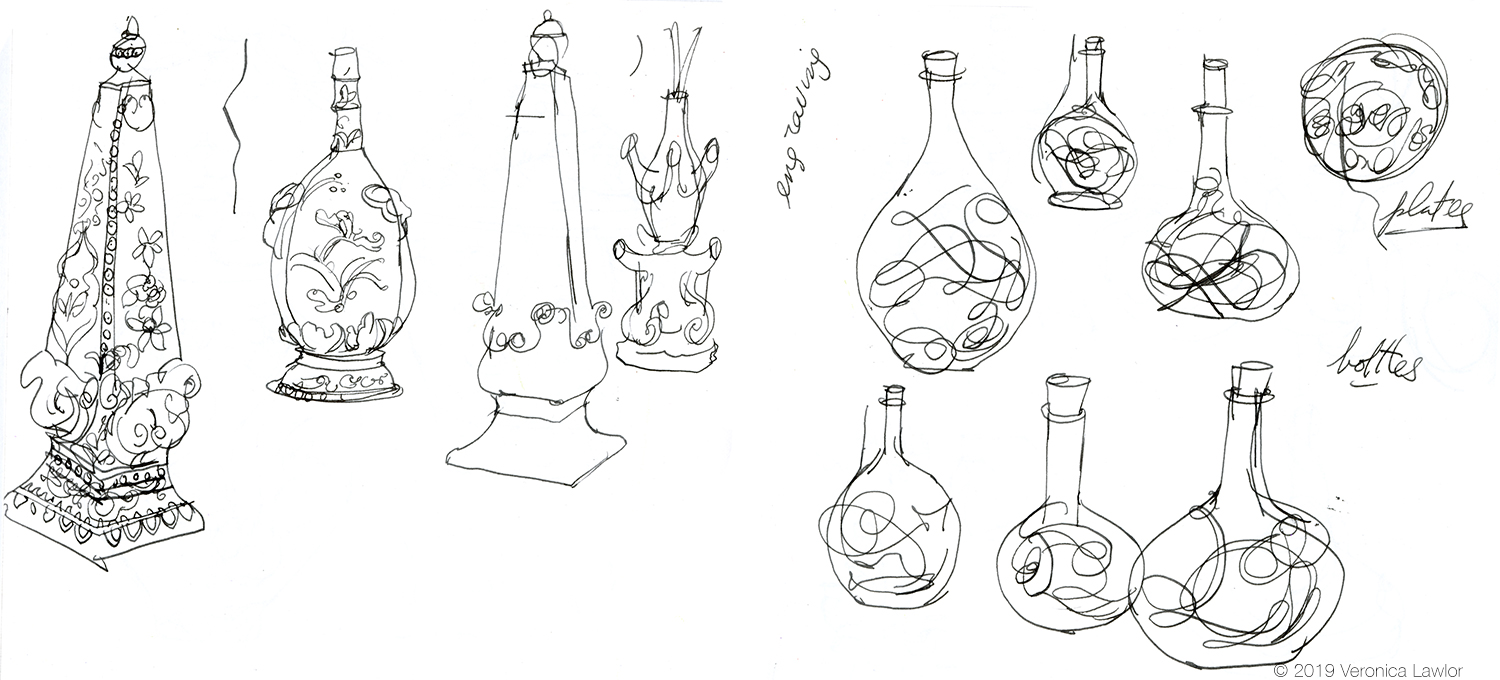
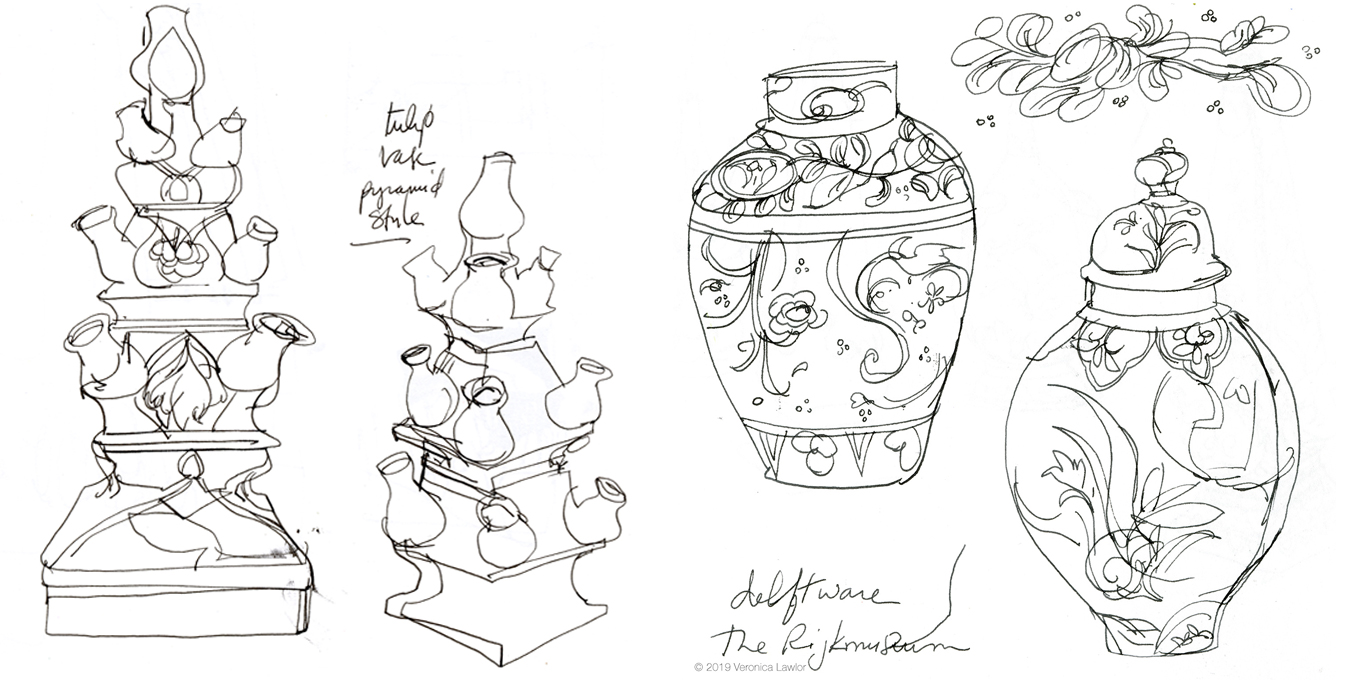

Inspirational sketches!!! I can learn a ton from these, but of course, unlike my new heroine here, my talent is tres limited! Yikes!
Ray
Rayharvey130@gmail.com
Really enjoyed this, great that you are posting these.
Thank you Ray!